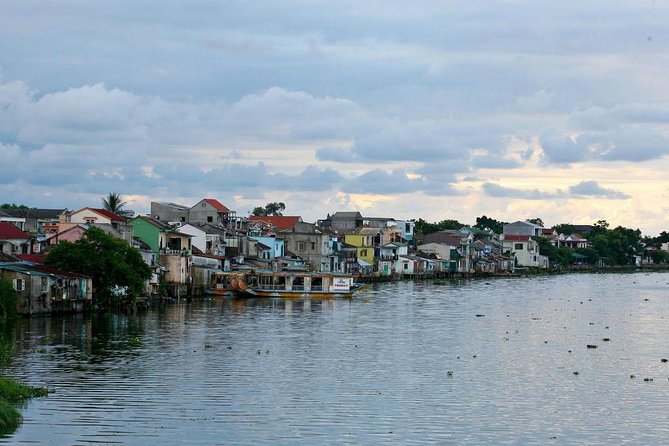Thành phố Huế Trip Overview
Take a Walk in Imperial Citadel and Ruined Forbidden City of Hue Vietnam
Learning about Life of the Emperors, Their Wives – Concubines – Eunuchs
Learning about history and culture of Hue and Vietnam with a local expert
Additional Info
Duration: 150 to 180 minutes
Starts: Thành phố Huế, Vietnam
Trip Category: Cultural & Theme Tours >> Cultural Tours
Explore Thành phố Huế Promoted Experiences
What to Expect When Visiting Thành phố Huế, Thừa Thiên Huế, Vietnam
Take a Walk in Imperial Citadel and Ruined Forbidden City of Hue Vietnam
Learning about Life of the Emperors, Their Wives – Concubines – Eunuchs
Learning about history and culture of Hue and Vietnam with a local expert
Itinerary
This is a typical itinerary for this product
Stop At: Hue Imperial City (The Citadel), Hue Vietnam
09.00 AM or 02.00 PM: Our Friendly & Informative Tour Guide will meet you at 4 Holy Cannons of Ngan Gate (Cửa Ngăn). Today, we will have 2.5 hours walking in Hue Imperial Citadel to learn about Hue History and Vietnamese Royal Culture with:
Nine Holy Cannons (Cửu Vị Thần Công): 9 cannons that Hue artisans cast in Gia Long’s second year (1803). Nine cannons are considered as one of the most valuable bronze works of art. The ancient nine cannons were placed at the foot of the Imperial Citadel, at the entrance of the Ngo Mon Gate – the imperial city of Hue. During the reign of King Khai Dinh, they were relocated to their current position.
Noon Gate (South Gate – Ngọ Môn Huế): Built-in 1833 in the traditional Vietnamese style under the rule of King Minh Mang and used by the Kings for troop movements and ceremonies.
Flag Tower (Kỳ Đài Huế): an architectural monument of the Nguyen Dynasty located in the middle of the south face of Hue citadel within the Nam Chanh fortress which is also the place to hang the flag of the royal court.
Supreme Hamorny Palace (Điện Thái Hòa): This Palace is located in the Imperial City area of Hue citadel, which is the coronation place of 13 Nguyen kings from Gia Long to Bao Dai. In feudal regimes, this palace was considered the center of the country.
Nine Dynastic Urns (Cửu Đỉnh Huế): These are nine bronze urns, located in front of The Mieu Temple in Hue Imperial Citadel. The Nine Peaks was commissioned by Emperor Minh Mang in the winter of 1835 and inaugurated on March 1, 1837.
The Mieu Temple (Thế Miếu Huế): The Mieu also called The To Mieu built in 1821 by Second Kings of the Nguyen Dynasty – Minh Mang. This is a temple to worship 10 Kings of the Nguyen Dynasty.
Dien Tho Palace (Cung Diên Thọ): Dien Tho Palace is a system of palace architecture in Hue Imperial Citadel, the residence of the Queen Mothers. Located in the west of the Forbidden City, north of Phung Tien Palace and south of Truong Sanh Palace, Dien Tho Palace is considered to be the largest scale palace architecture system remaining in Hue.
Forbidden Purple City (Tử Cấm Thành Huế): The Forbidden Purple City belongs to a complex of the ancient capital of Hue which is the center of daily life of the King and the Nguyen Dynasty. The Forbidden City is located behind the Thai Hoa palace, was built in Gia Long 3rd year (1804) called the Imperial Palace. In the third year of Minh Mang’s reign (1822), the king changed his name to Forbidden Purple City.
Duration: 2 hours 30 minutes
Stop At: Museum of Royal Antiquities, 3 Le Truc, Hue Vietnam
Hue Royal Antiques Museum (Bảo Tàng Cổ Vật Cung Đình Huế): This was the Long An palace built-in 1845 under the reign of King Thieu Tri. In 1923, King Khai Dinh decided to turn this palace into a museum after he returns from France.
Duration: 20 minutes






